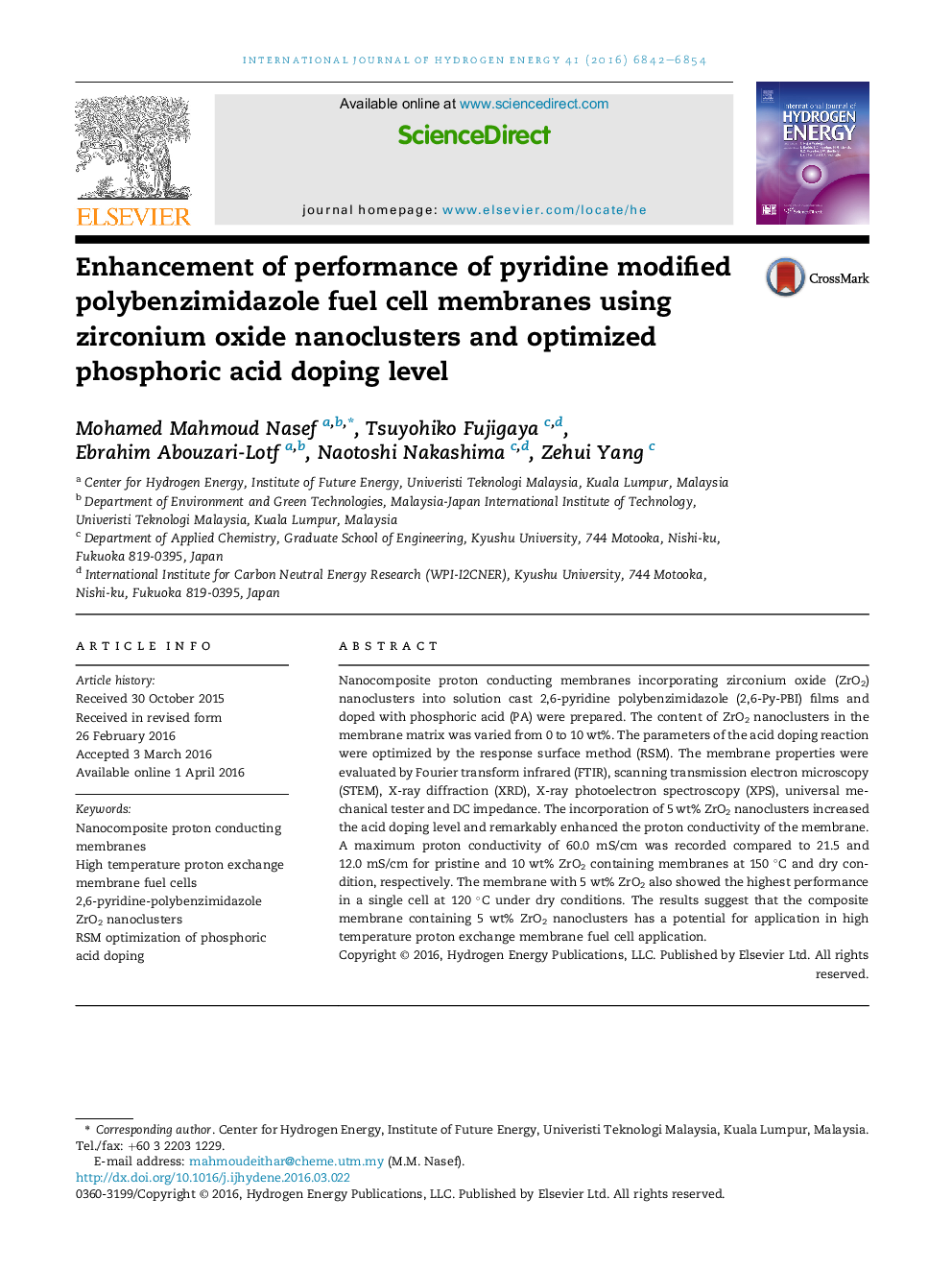| Article ID | Journal | Published Year | Pages | File Type |
|---|---|---|---|---|
| 1270690 | International Journal of Hydrogen Energy | 2016 | 13 Pages |
•Nanocomposite pyridine-polybenzimidazole/ZrO2 doped with H3PO4 was prepared.•Zirconia nanoclusters were incorporated at 5 and 10 wt% in a cast Py-PBI films.•Acid doping level was optimized using response surface method.•The addition of 5 wt% of ZrO2 increased acid doping and proton conductivity.•Membrane with 5 wt% of ZrO2 recorded enhanced fuel cell performance at 120 °C.
Nanocomposite proton conducting membranes incorporating zirconium oxide (ZrO2) nanoclusters into solution cast 2,6-pyridine polybenzimidazole (2,6-Py-PBI) films and doped with phosphoric acid (PA) were prepared. The content of ZrO2 nanoclusters in the membrane matrix was varied from 0 to 10 wt%. The parameters of the acid doping reaction were optimized by the response surface method (RSM). The membrane properties were evaluated by Fourier transform infrared (FTIR), scanning transmission electron microscopy (STEM), X-ray diffraction (XRD), X-ray photoelectron spectroscopy (XPS), universal mechanical tester and DC impedance. The incorporation of 5 wt% ZrO2 nanoclusters increased the acid doping level and remarkably enhanced the proton conductivity of the membrane. A maximum proton conductivity of 60.0 mS/cm was recorded compared to 21.5 and 12.0 mS/cm for pristine and 10 wt% ZrO2 containing membranes at 150 °C and dry condition, respectively. The membrane with 5 wt% ZrO2 also showed the highest performance in a single cell at 120 °C under dry conditions. The results suggest that the composite membrane containing 5 wt% ZrO2 nanoclusters has a potential for application in high temperature proton exchange membrane fuel cell application.
Graphical abstractFigure optionsDownload full-size imageDownload as PowerPoint slide
